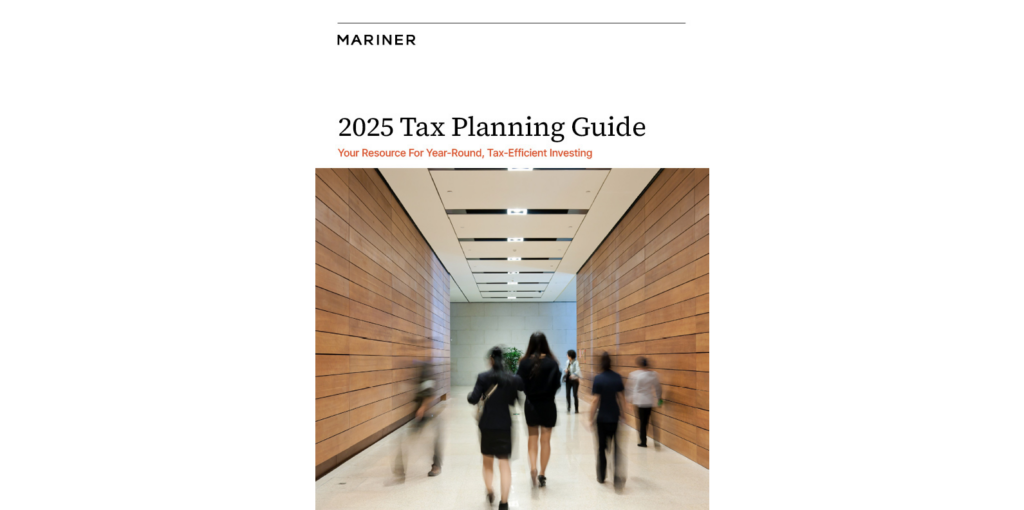Charitable Giving Strategies
Read time: 4 minutes
Just like that, we’re in the thick of the holiday season, also known as charitable giving season. It’s a time to be generous, but you can also be tax savvy by using donor-advised funds (DAFs), making qualified charitable distributions (QCDs) and taking advantage of the IRS’s annual gift tax exclusion. Here are answers to a few key questions about these strategies.
Q: How Do Donor-Advised Funds Work?
A: DAFs are charitable giving vehicles sponsored by community foundations, public charities and investment firms that manage charitable funds. Donors contribute assets to the fund, ranging from stocks and bonds to non-publicly traded assets like real estate and cash.
Individuals are then eligible for an income tax deduction of the assets’ fair market value, up to a certain percentage of their adjusted gross income. In addition, capital gains tax obligations on long-term appreciated assets are eliminated when assets are donated to DAFs. Donors recommend grants from their DAF to IRS-qualified 501(c)(3) public charities. The contributions and grants can take place at separate times, but donors reap the tax advantages as soon as they transfer assets into the DAF.
Q: How Closely Can I Control Grantmaking From a DAF?
A: Sponsoring organizations generally accept donors’ grantmaking recommendations to qualified charities. In addition, donors can attach a special purpose to their grants for the sponsoring organization to relay to the charity. Grant recommendations can also be made in honor of loved ones. However, donors can’t use DAFs to fulfill legally binding pledges to a charity. One of the benefits of a DAF is simplified recordkeeping—donors don’t need to keep track of gifts to multiple organizations, they just need records of their contributions to the fund.
Q: Can a DAF Be Used As an Estate Planning Vehicle?
A: Yes. Contributions to a DAF can shrink the size of a taxable estate, in some cases to below the estate-tax threshold. Donors can also make bequests in their will to the DAF sponsor and can name the sponsor as beneficiary of assets, such as retirement accounts and life insurance policies, with instructions on how the assets should be distributed.
Q: How Do Qualified Charitable Distributions Work?
A: With this strategy, distributions are made from your IRA directly to a qualified charity or charities. QCDs satisfy the minimum distribution that IRA account holders are required to make every year. Starting in 2023, the first year of RMDs is the year you turn 73.1 Since IRA distributions are considered income, QCDs can reduce donors’ taxable income. You can start making QCDs, up to $100,000 per taxpayer, as early as age 70½.2 Under the SECURE 2.0 Act, these annual amounts will be indexed for inflation by the IRS. For 2024, they have been adjusted up to $105,000 per taxpayer.
Q: Can My QCD Exceed My RMD for a Given Year?
A: It can, but distributing more than you’re required to in one year won’t lower the RMD in future years. Also note that it’s permissible to use a portion of your RMD for charitable distributions and take the rest as income.
Q: How Does the Annual Gift-Tax Exclusion Work?
A: For 2023, individuals can give away up to $17,000 per recipient3 without triggering gift tax or needing to file a gift tax return. There is no limit to the number of recipients you can give to. Gifts exceeding $17,000 to an individual require a gift tax return, but they won’t be subject to gift tax unless you’ve reached the lifetime gift tax exemption limit of $12.92 million per individual.4 For 2024, the IRS recently announced that the annual gift amount has been increased to $18,000 per recipient, and the federal gift and estate tax exemption has been increased to $13.61 million per individual.
Your wealth advisor, with the support of our in-house tax experts, can help you develop a charitable giving strategy that lets you support the people and causes you care about most while minimizing the tax impact.
Sources:
1“Retirement Plan and IRA Required Minimum Distribution FAQs”
3“Frequently Asked Questions: Gifts & Inheritances”
This article is intended for informational and educational purposes only. The views expressed do not take into account any individual personal, financial, or tax considerations. As such, the information contained herein is not intended to be personal investment or tax advice or a solicitation to engage in a particular investment or tax strategy. Any opinions contained herein are based on sources of information deemed reliable, but we do not warrant the accuracy of the information. Please consult your tax and financial professional before making any tax, investment or financial-related decisions.
Mariner is the marketing name for the financial services businesses of Mariner Wealth Advisors, LLC and its subsidiaries. Investment advisory services are provided through the brands Mariner Wealth, Mariner Independent, Mariner Institutional, Mariner Ultra, and Mariner Workplace, each of which is a business name of the registered investment advisory entities of Mariner. For additional information about each of the registered investment advisory entities of Mariner, including fees and services, please contact Mariner or refer to each entity’s Form ADV Part 2A, which is available on the Investment Adviser Public Disclosure website. Registration of an investment adviser does not imply a certain level of skill or training.
